Maharashtra Board Class 10 Social Sciences, History and Political Science Paper-1 Question Paper 2025 PDF (Code N 861) is available for download here. The Social Sciences exam was conducted on March 15, 2025 from 11:00 AM to 2:00 PM. The Maharashtra State Board of Secondary and Higher Secondary Education (MSBSHSE) conducted the Class 10 examination for a total duration of 3 hours, and the question paper had a total of 80 marks.
Maharashtra Board Class 10 Social Sciences, History and Political Science Paper-1 Question Paper 2025 (Code N 861) with Solutions
| UP Board Class Social Sciences Question Paper with Answer Key | Check Solutions |

The earliest museum in the world was discovered in the excavations at the city of
The first Chief Minister of Maharashtra was \dots
The Sanskrit text of `Hitopadesh' was translated into German by \dots
Raigadala Jevha Jag Yete --- Vasant Kanetkar
Tilak ani Agarkar --- Vishram Bedekar
Sashtang Namaskar --- Acharya Atre
Ekach Pyala --- Annasaheb Kirloskar
Leopold von Ranké --- The Secret of World History
Michel Foucault --- Archaeology of Knowledge
Karl Marx --- Das Kapital
René Descartes --- Reason in History
Prabhakar --- Acharya P.K. Atre
Darpan --- Balshastri Jambhekar
Deenbandhu --- Krishnarao Bholekar
Kesari --- Bal Gangadhar Tilak
Complete the following Chart
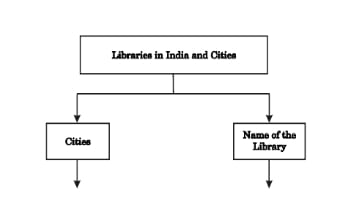
Delhi Public Library
View Solution
Step 1: Delhi Public Library
The Delhi Public Library (DPL) is one of the largest public libraries in India, and it serves as a major cultural and educational institution in the capital city. Established in 1951, DPL provides free access to books and other learning materials to people of all age groups. It promotes literacy, learning, and community engagement.
Step 2: Role in Education and Culture
DPL plays a pivotal role in promoting reading habits and supporting education across Delhi. With multiple branches throughout the city, it reaches a broad population, including students, professionals, and the general public.
\[ \boxed{\begin{minipage}{\textwidth}{Delhi Public Library is located in Delhi.} \end{minipage}} \] Quick Tip: \textbf{Quick Tip:} The Delhi Public Library is an accessible cultural hub that supports education and literacy throughout the capital.
Hyderabad
View Solution
Step 1: State Central Library, Hyderabad
The State Central Library of Hyderabad is one of the most prominent libraries in Telangana. Located in the heart of the city, it serves as a central hub for books, research, and cultural activities. Established in 1891, the library holds a large collection of books, journals, and periodicals in various languages, and plays an important role in the educational landscape of the state.
Step 2: Role of the Library
The library caters to a diverse audience, including students, researchers, and general readers, and is known for its vast collection of literature, history, and academic works. The library also hosts various educational and cultural programs to engage the public.
\[ \boxed{\begin{minipage}{\textwidth}{The State Central Library is located in Hyderabad.} \end{minipage}} \] Quick Tip: \textbf{Quick Tip:} The State Central Library in Hyderabad is a vital resource for education and research in Telangana, with a rich historical collection.
Mumbai
View Solution
Step 1: Asiatic Society Library, Mumbai
The Asiatic Society Library, founded in 1804, is one of the oldest libraries in India, located in Mumbai. It houses an invaluable collection of rare manuscripts, books, and journals. It was originally founded to promote the study of Oriental literature and culture, and today, it continues to be a hub for research in the humanities and social sciences.
Step 2: Legacy and Contributions
The Asiatic Society Library has contributed significantly to the cultural and intellectual history of India. The library holds important historical documents, including early editions of Indian and Western works, making it an essential resource for scholars and researchers. It has played a pivotal role in preserving India's rich literary heritage.
\[ \boxed{\begin{minipage}{\textwidth}{The Asiatic Society Library is located in Mumbai.} \end{minipage}} \] Quick Tip: \textbf{Quick Tip:} The Asiatic Society Library is a historical gem that offers invaluable resources for research on Indian and Oriental literature.
Complete the following concept map:
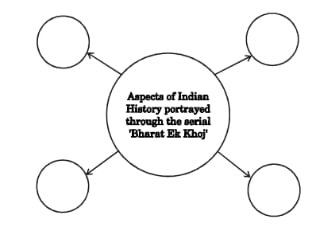
Complete the following concept map:
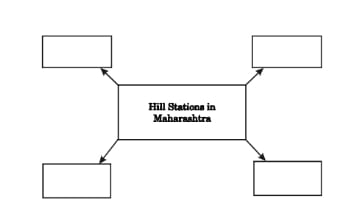
Applied History
Maratha Style of Painting
Correct Answer: Maratha Style of Painting
Sthalakosh
Foucault called his method, `the archaeology of knowledge'.
Bakhar is an important type of historical documents.
Expertise in History is important in the film industry.
It is essential to study the history of technology.
Who was captain of Indian hockey team in 1936?
Which day is celebrated as National Sports Day in India?
State your opinion about the game of Hockey.
View Solution
Step 1: The Nature of the Game
Hockey is a fast-paced, exciting team sport that demands exceptional skill, agility, and teamwork. It involves two teams competing to score goals by hitting a ball into the opponent’s net using a curved stick. The game is dynamic, with players constantly moving, passing, and attempting to outmaneuver their opponents. Hockey requires excellent coordination between players, as well as precise timing, speed, and strategic thinking to outwit the opposition.
Step 2: Importance of Hockey in India
Hockey is not only an exciting sport but also holds great historical and cultural significance in India. As the national game of India, it has brought glory to the country, especially through Olympic victories. India’s performance in hockey during the 20th century, with multiple gold medals in the Olympics, made the country a dominant force in the sport. Players like Major Dhyan Chand became legends for their skill and impact on the game.
Step 3: Benefits of Playing Hockey
Hockey is more than just an exciting game; it offers numerous benefits, including the development of teamwork, discipline, and physical fitness. Players learn to collaborate and communicate effectively while working toward a common goal. Hockey also promotes physical endurance, agility, and stamina, as it involves running, swift movements, and quick reflexes. Moreover, the sport helps in developing mental skills such as concentration, decision-making, and strategic thinking.
\[ \boxed{\begin{minipage}{\textwidth}{Hockey is an exciting and skillful team game that develops teamwork, discipline, and physical fitness.} \end{minipage}} \] Quick Tip: \textbf{Quick Tip:} Hockey is a dynamic sport that builds both physical and mental strength, promoting teamwork and enhancing fitness. The skills developed through hockey, such as teamwork and discipline, are highly beneficial in both professional and personal life.
What is feminist historiography?
What kind of professional opportunities are available in the field of Arts?
What is Powada?
Explain any three types of tourism.
In Maharashtra seats are reserved for women in local self-governing institutions.
To increase agricultural production and become self-sufficient with regard to food grains \dots was initiated.
Under special circumstances the Election Commission holds re-elections in a particular constituency for a second time.
Secrecy in the working of Government has increased due to the Right to Information.
Coalition politics leads to instability.
Provisions for minorities
Workers movements
Complete the following chart :
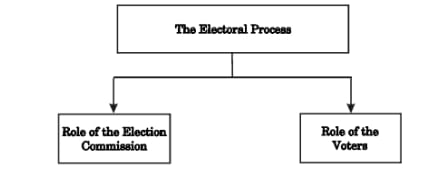
The Electoral Process
Complete the following concept map :
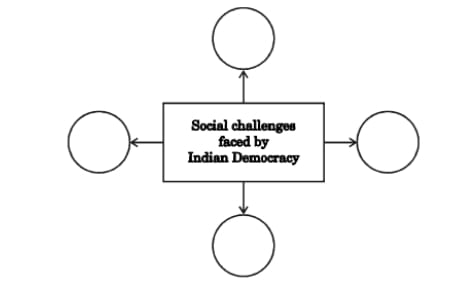
Social Challenges Faced by Indian Democracy
1. Casteism and Inequality
2. Communalism and Religious Conflicts
3. Gender Discrimination
4. Illiteracy and Poverty
State the norms that are set by the Election Commission to get recognition as a national party.
Which factors are required for the success of democracy in India?





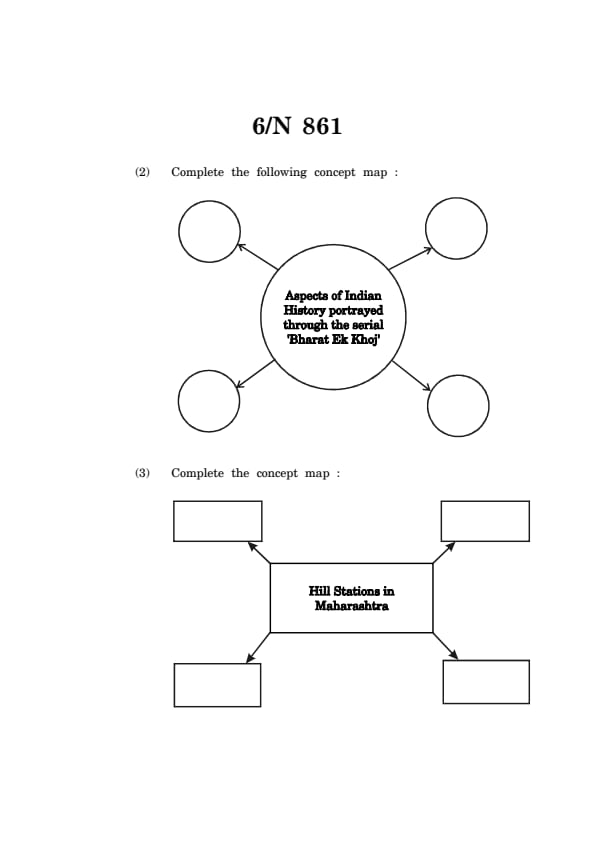
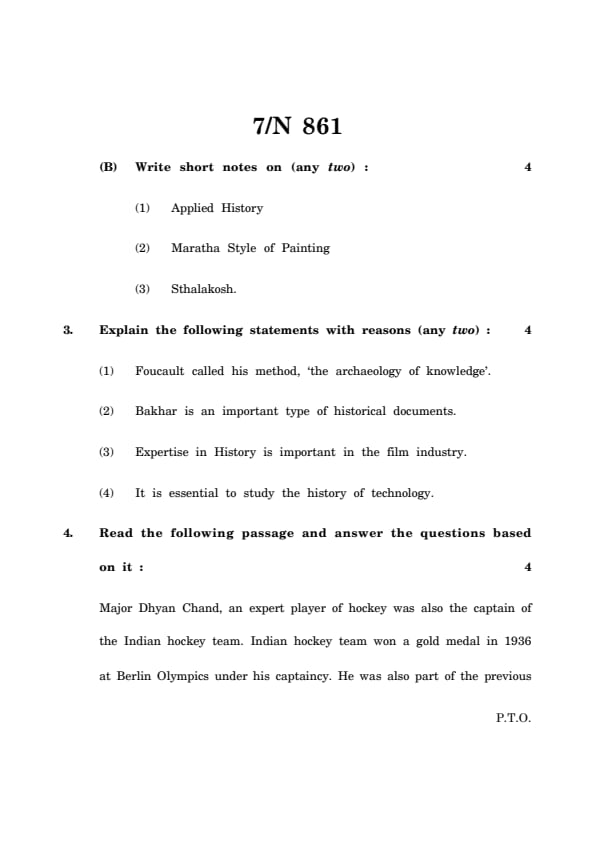


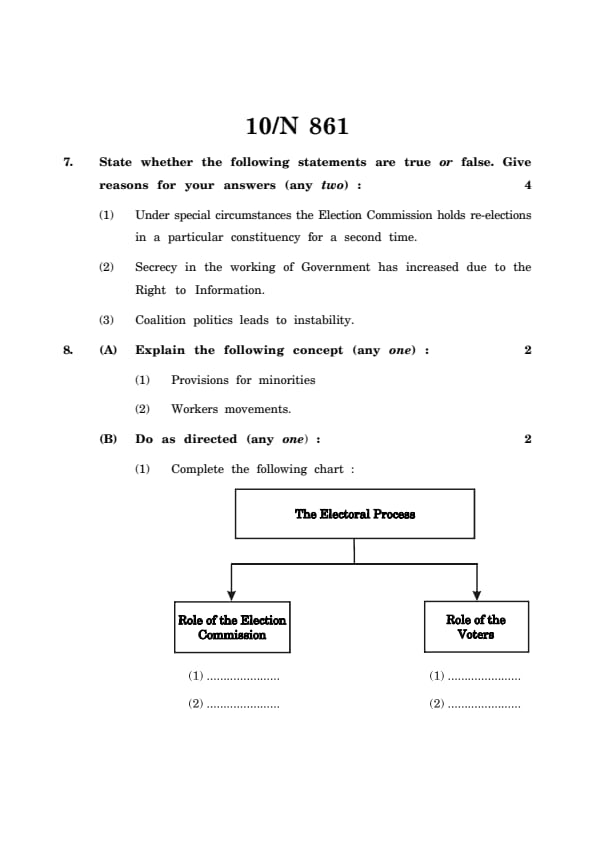
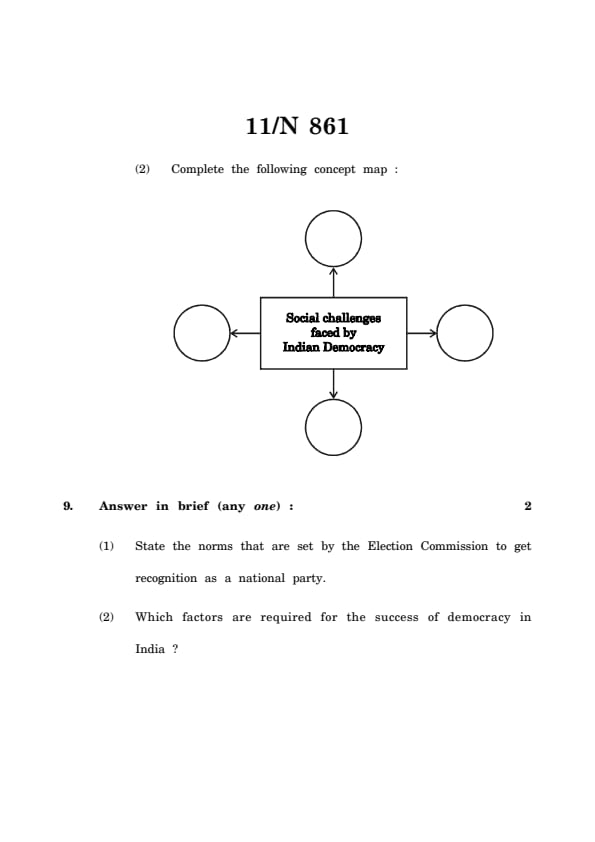



Comments